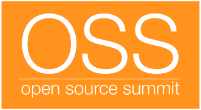 Last week’s inaugural NASA Open Source Summit in Mountain View, Calif. was aimed at identifying the agency’s issues surrounding open source tools and using the power of the web to collect policy recommendations.
Last week’s inaugural NASA Open Source Summit in Mountain View, Calif. was aimed at identifying the agency’s issues surrounding open source tools and using the power of the web to collect policy recommendations.
The Summit organizers convened thinkers and leaders in open source technology from around the country, including representatives from RedHat, GitHub, Google, the Department of Defense, Mozilla, IBM and from within NASA itself. If you want to review the play by play, I liveblogged the NASA Open Source Summit at Govfresh.
In a separate report, eWeek picked up on the difficult licensing and export issues open source presents to NASA. The Register focused on the talk that Google’s open source and public sector engineering manager Chris DiBona gave, where he emphasized that open source won’t kill you. Red Hat’s OpenSource.com report noted the overall gist of the event: make openness the default.
Over the course of two days at the NASA Ames center, I spoke with many of the presenters and attendees about what they shared or learned. Below, Chris Wantstrath (@defunkt), one of the co-founders of GitHub, spoke at length about open source at NASA.
Geek lesson: “I guess this shouldn’t be surprising, but we deal a lot at GitHub with collaboration in the software development process,” Wantstrath said. “It seems like the big thing here [at the Summit] is a higher level of that. Licensing, process issues, getting the sign-off to just put your code out into the wild. We sort of deal in the wild and here, they’re just trying to get to that point.
Gil Yehuda (@gyehuda), former Forrester analyst and current director of open source at Yahoo, spoke frankly about the pain points NASA is experiencing in the open source arena:
Key takeaway:: Open source policies “should be a service, not a barrier,” Yehuda said. There are the “ridiculously brilliant people here, working on the most amazing things, and yet they’re encumbered by processes.”
Three NASA Open Source Summit presentations of note
You can find them all of the presentations delivered at the Summit on SlideShare. Three are particularly interesting, although all are worth browsing.
Terry Fong of the Intelligent Robotics Group shared his view of open source at NASA from a practitioner’s perspective (the full presentation is posted here)
Key stat: Fong said it takes six months for code to be released as open source.
David Wheeler (presentation available here), from the Institute for Defense Analysis at the Defense Department, offered a cogent analysis of the NASA Open Source Agreement (NOSU).
Fundamental issue: NOSU is incompatible with other open source licenses. Open source experts at the Summit strongly recommended that NASA consider GPL, BSD or another open source license.
Chris Mattmann, from the NASA Jet Propulsion Laboratory, shared an open source strategy for NASA that will be useful for any government agency that’s interested in open source or building communities (his full presentation is posted here). Mattmann may be familiar to regular Radar readers: last year he spoke with me about how NASA open source technology is leading to better medical decisions.
Key insight: The measure of a healthy community is its responsiveness. Mattmann has considerable insight into what it takes to build healthy open source communities: his OODT project is one of the first to work within the Apache Incubator.
NASA and open government
For insight into the open government aspect of the Summit, I talked with Nick Skytland (@skytland), the director of the NASA open government initiative. “I think the general message has been sent that open source is a valuable tool for NASA to consider in the future, and I think we’re going down that path,” he said.
Along with talking about some of the tools and platforms that NASA uses, Skytland described what open government means in context:
We have technology, we have policy, which is what this event is really all about, but fundamentally, open government is about culture — changing culture to embrace technology, getting permission to experiment and try things that maybe we hadn’t considered before. To improve the way we do business and also to contribute to our mission.
NASA as an example for collaboration and open source
This Summit, which combined virtual and in-person participation, is a worthy example of collaboration around improving government. Lucas Cioffi, chairman of the Open Forum Foundation, talked about how the organizers brought different groups together:
This was a highly participatory event — not just collecting tweets, not just a typical chat, but actually engaging people in deeper conversation. We used the very interesting phone conference tool called Maestro Conference. It took the dozens and dozens of people that were interested in deeper discussion and broke them out in smaller discussions. Most importantly, we blended the in-person and remote participation together using Google Docs so that people who were not present were still in the same conversation. They were building on each other’s ideas, commenting on each other’s ideas.
Whether it’s a huge federal institution or small town council, embracing the spirit of open government means officials have to move beyond what information technology by itself can accomplish. That’s a tall order. It requires a cultural change. To put it another way, open government is a mindset.
That’s one of the reasons why NASA getting open source right will make a difference to governments everywhere. If the agency can find a way to connect its vast amounts of data and scientific expertise to more people, both NASA and citizens will benefit. When the White House open sourced its IT dashboard code last week, it created a footpath for other agencies to follow when they release code. NASA’s policy development and open source efforts could offer similar guidance.
Related:
